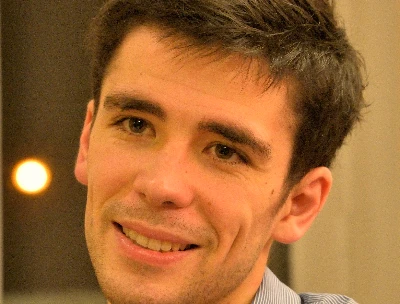3672 - Multicentric Development and Evaluation of [<sup>18</sup>f]FDG PET/CT and CT Radiomics Models to Predict Regional and/or Distant Recurrence in Early-Stage Non-Small Cell Lung Cancer Treated By Stereotactic Body Radiation Therapy
Presenter(s)

K. Arzel1, V. Bourbonne2, T. Louis3, F. Cousin3, D. Visvikis2, C. Mievis3, N. Jansen4, B. Duysinx3, R. le Pennec1, M. Nebbache1, M. Rehn5, M. Hamya1, M. Geier1, P. Y. Salaun6, U. Schick2, M. Hatt7, P. Coucke8, R. Hustinx3, P. Lovinfosse3, and F. Lucia2; 1CHU Brest, Brest, France, 2LaTIM, INSERM, UMR 1101, University of Brest, ISBAM, UBO, UBL, Brest, France, 3CHU Liège, Liège, Belgium, 4Liège University Hospital, Liège, Belgium, 5Radiation Oncology Department, Brest University Hospital, Brest, France, 6CHRU BREST, BREST, France, 7LaTIM, UMR 1101 INSERM, University of Brest, Brest, France, 8Department of Radiation Oncology, University Hospital of Liège, Liège, Belgium
Purpose/Objective(s): The aim of this study was to validate a previously developed radiomic model based on18F-fluorodeoxyglucose positron emission tomography (18F-FDG PET/CT) to predict regional and/or distant recurrence in patients with early-stage non-small cell lung cancer (ES-NSCLC) after stereotactic body radiation therapy (SBRT).
Materials/Methods: Our prior research involved developing a radiomic model using three PET features in a training set of 273 patients, which was subsequently validated in an internal set of 191 patients and further evaluated in one external dataset comprising 63 patients. In this latest study, we retrospectively gathered additional data from the same external French center, including 39 patients who underwent 18F-FDG PET/CT and SBRT between 2021 and 2022. Radiomic features were extracted using an open source software toolbox and harmonized across datasets using ComBat. The previously developed radiomic model was then applied to this new dataset.
Results: Our radiomic model demonstrated consistent predictive accuracy for regional and/or distant recurrence in this new external testing set, with a C-statistic of 0.76 (95% CI: 0.59, 0.88). This result aligns well with our previous findings, where the model achieved C-statistics ranging from 0.70 to 0.78 (95% CI: 0.63, 0.88) across both training and testing sets.
Conclusion: This study strengthens the reliability and robustness of the PET-based radiomic model for predicting regional and/or distant recurrence and to discuss an adjuvant systemic treatment in ES-NSCLC after SBRT. Prospective validation of our models will now be carried out.
